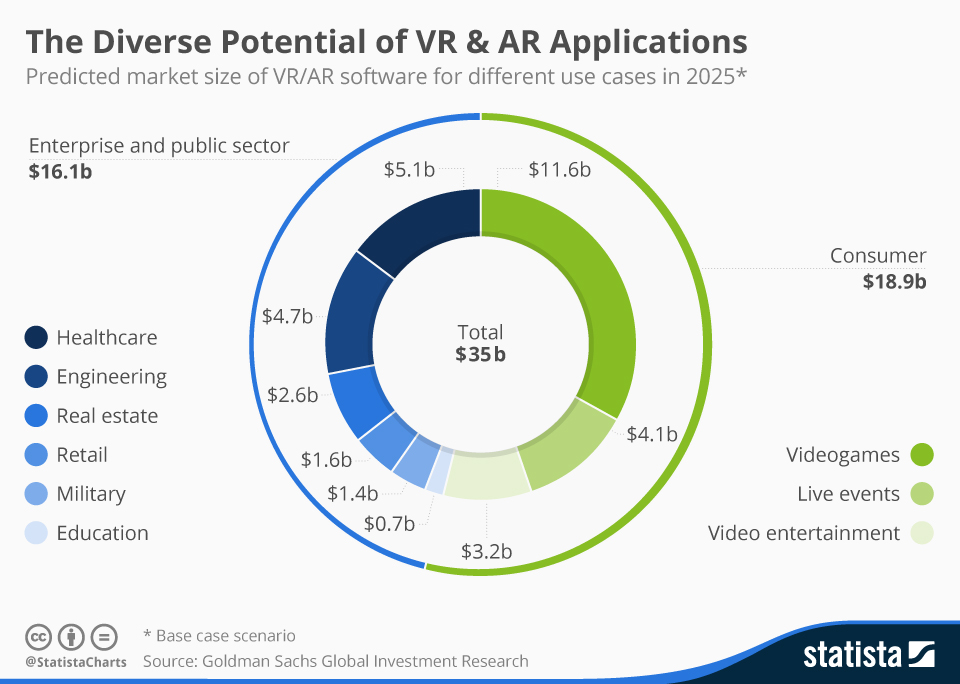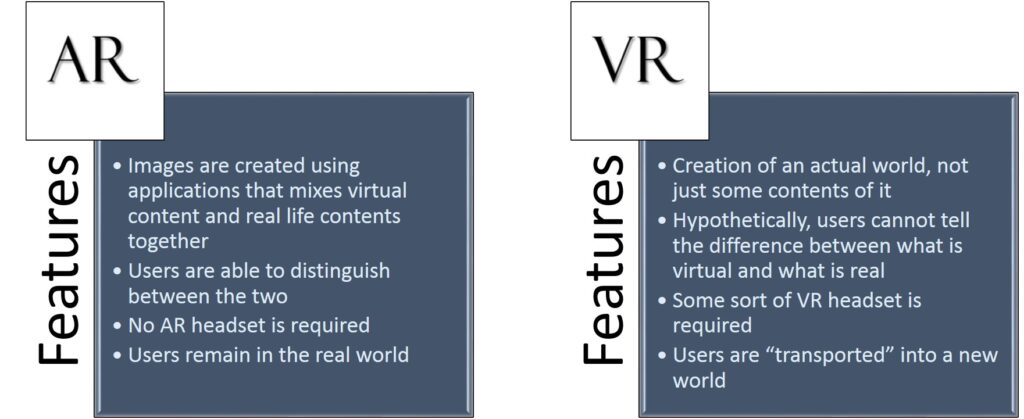How Augmented Reality and Virtual Reality will change the education system

Vikash Sharma | March 29, 2021
AR and VR are two sides of the same coin. You could think of AR as VR with one foot in the real world: AR stimulates artificial objects in the real environment; VR creates an artificial environment to inhabit.
I would quote a line by Dale Carnegie “Learning is an active process. We learn by doing.. Only knowledge that is used sticks in your mind”. With AR and VR technology, students can now actively engage in the learning material. Instead of looking at pictures in textbook, students learn by doing. VR and AR allow students to have experiences that weren’t possible before. VR can be used to teach lots of things, from history to human anatomy. Now imagine that you want to teach biology to children; needless to say, getting them interested in the learning process can be difficult. But there’s a way out – you can use an Augmented Reality (AR) mobile app through which students will direct their smartphone cameras at images in their books and virtual objects will appear on smartphone screens. Educators can use augmented reality to teach whatever subject they need – from the alphabet to geography to chemistry

Role of Augmented Reality and Virtual Reality in education
Artificial intelligence and virtual reality are the realities of the future education system. Classroom learning is undergoing change at an unprecedented rate. Technology is making its way to the classroom, increasing the interactive elements that many students are benefitting from.
How AR and VR will change the education system VR and AR can be used to supplement course curriculum and help students to better understand course concepts by stimulating experiences that are relevant to course content. It also help to make education more personalized for each student. This new technology has the ability to assess individual skills and analyze data on each student’s progress which means the teacher can offer tailored instructions for improvement.
How AR & VR is helping to deal with COVID-19
AR enables digital information to be superimposed & integrated into our physical environment. With many of us now at home during a global pandemic, AR is a tool that can help us transform our immediate surroundings into learning, work & environment spaces.
There are three things AR does very well: visualization, annotation & storytelling. There are examples in each of these areas that are both timely in the current reality of COVID-19 & which can be built upon once cultural institutions, schools & workplaces reopen their doors. AR is no longer just about the technology; it’s about defining how we want to live in the real world with this new technology and how we well design experiences that are meaningful and can enrich humanity.

During these phenomenal times, VR offers a solid option to video calls & those that adopt it could well decide to keep up virtual communication as a long-term strategy. Perhaps the greatest advantage of the medium is its ability to cause individuals to feel like they are in the same space together, without the requirement for travel, an unmistakable success for the earth & better utilization of time & budget plans. These virtual environments can be intended for optimal comfort, productivity, & creativity.
AR and VR aren’t meant to replace books or teachers. Instead, this new technology should be used as a helpful tool to enhance learning for students. Schools and teachers will have to decide which classes this technology is appropriate for, as well as determine the appropriate time and place for using it. Finding the right balance with new technology is key.
Students today are already familiar with various technologies, which is why computerized tools and apps make sense in a classroom setting.
According to research released at ISTE 2016, 93 percent of teachers say their students would be excited to use virtual reality and 83 percent say that virtual reality might help improve learning outcomes – from better understanding of learning concepts (77 percent) to greater collaboration (71 percent) and motivation in the classroom (84 percent).
Seeing, hearing, and touching possible realities through the power of AR can stir our willingness to welcome and activate positive change in the world. Technology is the biggest factor impacting Indian education now, with digital content and classrooms, online assessments and cloud-based platforms augmenting the academic and administrative processes of the K-12 sector.

Mechatron Robotics is the pioneer & one of the top Institute for learning Coding, Robotics, IOT, Python, Electronics, Arduino, App Development
